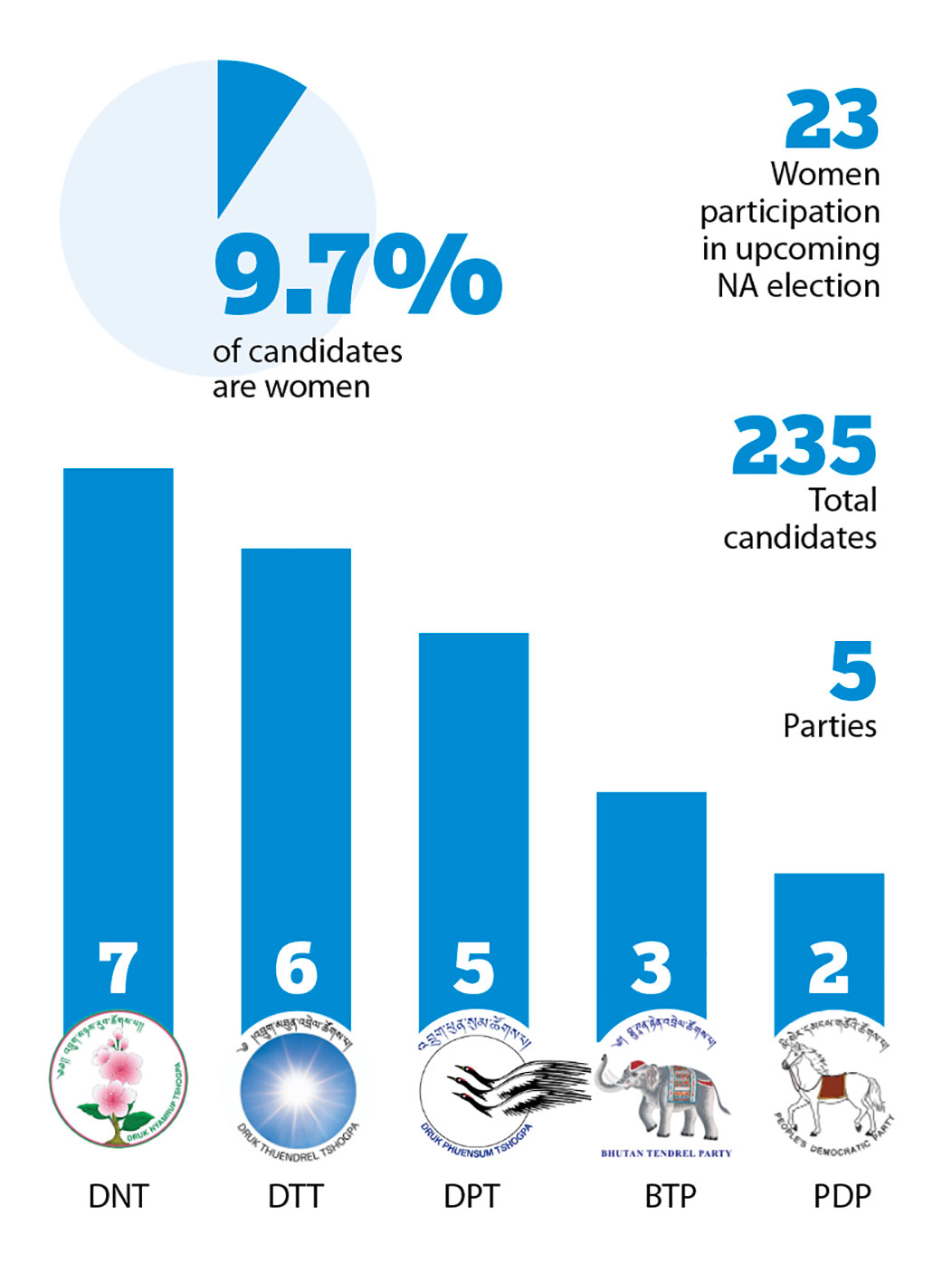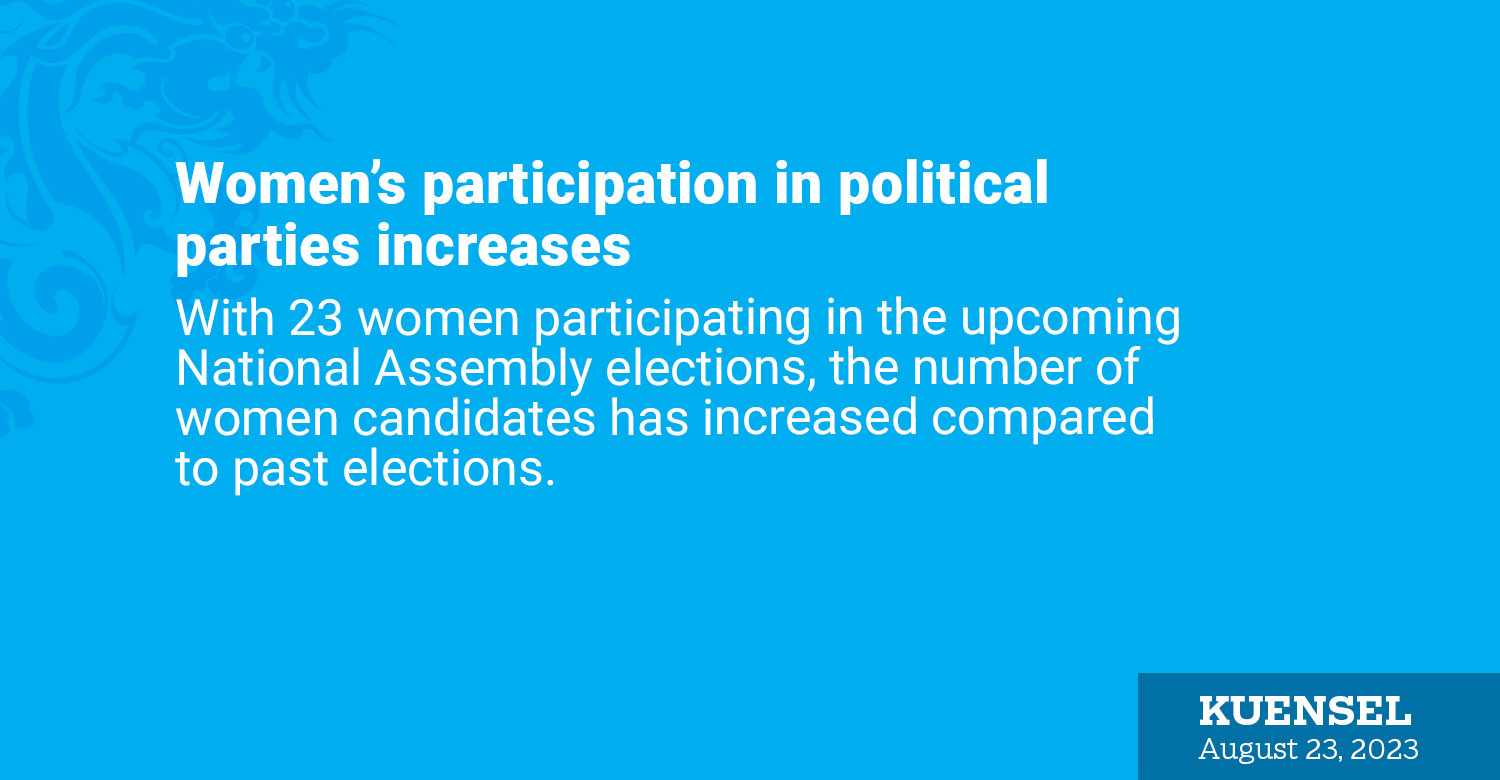Dechen Dolkar
With 23 women participating in the upcoming National Assembly elections, the number of women candidates has increased compared to past elections.
In the 2018 elections, the four registered political parties fielded 19 female candidates. However, considering an additional political party into the fray, the women’s participation rate per party has declined.
In 2018, 10.1 percent of the candidates were female.
In this election, women candidates make up 9.7 percent of the 235 candidates from 47 constituencies to date.
Almost all the parties have finalised their candidates.

Party-wise representation
Political parties claim that it is difficult to find female candidates.
Party officials said that their priority was to get at least 20 percent of female in the party. Political parties roped in female candidates who contested the recent National Council elections. Five women contested for NC elections and only one was elected.
Druk Nyamrup Tshogpa (DNT) has seven female candidates in the upcoming elections, which is the highest among the parties. DNT General Secretary, Phurba, said that they are not looking at gender equity. “We are looking for qualified, winnable, and candidates who can serve the people.”
Druk Phuensum Tshogpa (DPT) has five as of now. The party’s general secretary, Sonam Tashi, said that they are exploring one more female candidate. In the 2018 elections, the party had five female candidates.
People’s Democratic Party (PDP) has only two female candidates, the same as in the 2018 election. PDP general secretary, Kuenga Tashi, said that the objective of the party is to get a minimum of 10 female candidates. “Our first approach is for female candidates for the vacant constituencies.”
Bhutan Tendrel Party (BTP) has three female candidates and Druk Thuendrel Tshogpa (DTT) six. The party said that the party firmly believes that Bhutanese society would be incomplete without women’s involvement. The party said that unfortunately, not many females have actively participated in the democratic process as candidates.
The DTT said that initially party was expecting to get around five female candidates and now the party is fortunate to have six. The party said that there are a lot of challenges finding female candidates as they don’t get support from family and community.
In 2008, there were a total of 10 female candidates; PDP had six, and DPT had four. All four were elected. In 2013, three female candidates from PDP and one from DPT were elected. In 2018, Bhutan Kuen-Nyam Party had seven female candidates.


